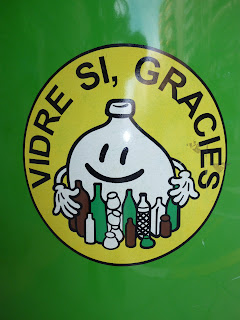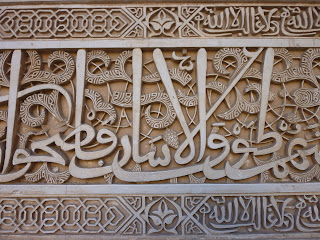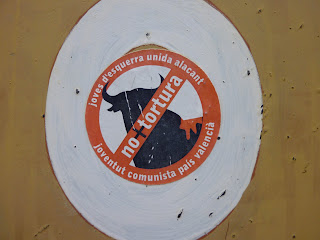First of all, apologies for the lack of updates! I chalk it up to schoolwork which began to intensify 3 weeks ago when final projects and exams for my program's classes began to be due, and tomorrow I have the final for my university class along with short papers on the 6 books we read this semester. But, at the beginning of this experiment, I could already sense that it would sadly fizzle out or degenerate to unexplained snap shots every few weeks (by the way, i added captions to the last post if you are interested). I seem to never keep up with anything that requires daily, repetitive effort, be it a diary, blog, or working out. There's just so many other things (especially here) that have yet to be done and are more rewarding. Also: the shotty internet connection at the house doesn't help. Pictures take FOR-EV-ER to load. But i found myself bored and not wanting to study anymore, in part because studying for open book tests always seems useless, and also because I feel indebted to my one registered follower (shout out to Brittany).
So here goes my recent trip to the north of Spain, mainly the Basque country.

So here goes my recent trip to the north of Spain, mainly the Basque country.

We (me and my friend Amanda) flew into Santander, it being thee closest Ryan Air airport, on cheap tickets that were offered in their Volcano Sale, spent a night, and took an early morning bus ride an hour and half to Bilbao in the province of Vizcaya. The ride was extremely green, skirting the coast that is dotted with little fishing villages that look like that. We mainly had two objectives: see the Guggenheim and meet up with Amanda's friend, but the city of Bilbao turned out to be way cooler than either of us expected and our one night there seemed a little too short.
.
.
Basque Country is known to be relatively isolated from the rest of Spain, with a more celtic culture and a language distinct from any other in the world that they rabidly defend. Under Franco, the terrorist separatist group ETA was formed and although it is a lot smaller today, it is still active and one can still see ETA graffiti. (Recently two policemen were killed in the French Basque Country by ETA, and a few days ago the number one and number two Basque leaders were captured in France due to their involvement.)
 Unintelligible Basque language
Unintelligible Basque language
 Unintelligible Basque language
Unintelligible Basque languageThe Guggenheim modern art museum is in Bilbao. It was built around ten years ago and since then the city has been completely revitalized and become a destination instead of the simple working-class port it once was. The Anish Kapoor exhibit was awesome, but the building itself seems to be the biggest attraction. L.A.'s Disney concert hall is too similar for me to be amazed by the architecture but it was still very cool.
The cuisine of the Basque Country is also famous. The call tapas 'pintxos' and they usually come served on a slice of baguette, although it is not necessary. The baking is also much more developed, being close to France. Bilbao had little tarts filled with rice pudding custard that we had to eat every time we saw them in a window. Above is an oxtail sandwich with red pepper soup on the left and grilled octopus with gazpacho and olive oil ice cream on the right. 3.50 euro each.
 Amanda on the river. After one night in the shady part of town, we were off to San Sebastian...
Amanda on the river. After one night in the shady part of town, we were off to San Sebastian...

 Amanda on the river. After one night in the shady part of town, we were off to San Sebastian...
Amanda on the river. After one night in the shady part of town, we were off to San Sebastian...































